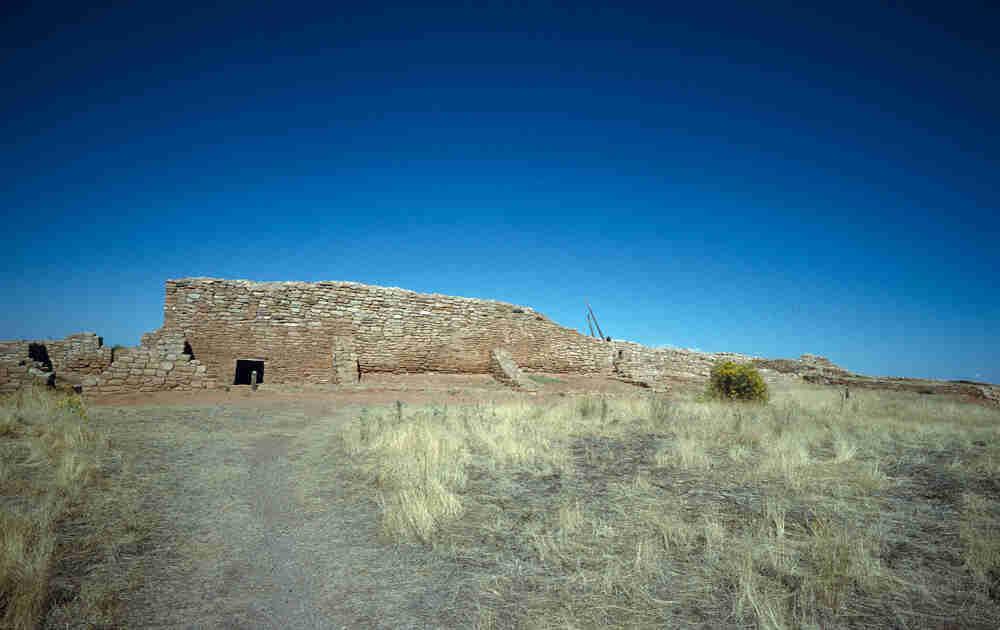Lowry Site
Full Article
Named for early homesteader George Lowry, the Lowry ruin near Cortez (Canyons of the Ancients National Monument, County Rd 7.25, Pleasant View, CO 81331) is a pueblo with thirty-seven rooms, eight kivas, and one Great Kiva. Built between about 1090 and 1120 CE, the Ancestral Pueblo site dates to the late Pueblo II (900–1150 CE) and Pueblo III (1150–1350 CE) periods. Archaeological evidence suggests that the Lowry site is a “Chacoan outlier” related to contemporaneous settlements in New Mexico’s Chaco Canyon.
Original Construction and Use
The Lowry site is the only excavated room block, or aboveground building with multiple side-by-side rooms sharing walls, in a larger Ancestral Pueblo multisite community. Lowry probably served as a community center or focal site for the larger multisite community. Settlement in the community began around 600 CE and gradually grew to an estimated population of up to 400 residents at its height between 1100 and 1300.
The Lowry pueblo was built in several distinct phases over the course of thirty years. In 1089–90, the initial core consisted of four rooms and possibly two kivas, plus the larger Great Kiva outside of it. Another round of construction in the first decade of the 1100s added twelve rooms and two kivas. No firm dates have been established for the south and east peripheral rooms. Some wall remnants are more than three meters (almost ten feet) tall, indicating that the pueblo had multiple stories, though probably no more than three.
The population of the pueblo could have reached fifty residents at its height in the early 1100s, depending on how many kivas were occupied at one time. (Archaeologists often assume one household of six for every kiva.) The pueblo’s use probably began to change in the mid-1100s, but there is evidence that it continued to be used into the mid-1200s.
Initial Excavations
In 1918 the anthropologist and archaeologist Jesse Walter Fewkes of the Smithsonian Institution’s Bureau of American Ethnology first professionally recorded the Lowry pueblo site. Calling it the “Acmen Ruin,” Fewkes described the site and photographed the unexcavated room block, noting that there was some evidence of digging near the site. A decade later, in 1928, the archaeologist Paul S. Martin examined the site as part of an expedition mounted by the Colorado Historical Society (now History Colorado). At the time, the unexcavated structure appeared as large mound overgrown with sagebrush and littered with wall stones.
Martin returned to the Lowry site in 1930–31 and 1933–34, this time under the auspices of Chicago’s Field Museum of Natural History, to conduct a thorough excavation of the room block. He excavated every room in the block, uncovering eight kivas in the room block as well as the separate Great Kiva. He documented his findings in great detail in “Lowry Ruin in Southwestern Colorado” (1936), which set a new standard for thoroughness in site reports.
Martin backfilled his excavations after each field season in an attempt to preserve the site. A few years later, Ben Williford, who had performed stabilization work at Mesa Verde National Park, did some basic, small-scale stabilization at Lowry. After Williford completed his work in 1936, Lowry received no further excavations or stabilizations for thirty years. In the meantime, the structure began to deteriorate as a result of erosion and exposure to the elements.
Stabilization and Preservation
In 1966–67 the Bureau of Land Management (BLM), which manages the Lowry site, contracted with the University of Colorado–Boulder to stabilize the structure. The work was overseen by James A. “Al” Lancaster, who had served as field foreman on Martin’s 1930s excavations and had since become a pioneer in prehistoric site stabilization. The team graded the area around the room block for better drainage, reconstructed crumbling walls, repointed mortar, and capped exposed wall tops.
In October 1967, the Lowry site was designated a National Historic Landmark. The area became popular as a local picnic area, and over the years the BLM has added restrooms, trails, and interpretive markers at the site.
In 1974–75 the BLM again contracted with the University of Colorado–Boulder to perform excavation and stabilization work at the site. The team, led by David A. Breternitz and the field directors Al Lancaster and Larry V. Nordby, included students from Boulder, Fort Lewis College, and Northern Arizona University. They reexcavated many areas Martin had backfilled in the 1930s, including the Great Kiva, and performed dozens of structural repairs throughout the room block. They also added a roof over some parts of the site for protection. More stabilization and repairs were necessary in the late 1970s, early 1980s, and early 1990s.
Since 2000 the Lowry site has been part of Canyons of the Ancients National Monument. Fort Lewis College and Colorado State University use the site for research and archaeological field schools.




















